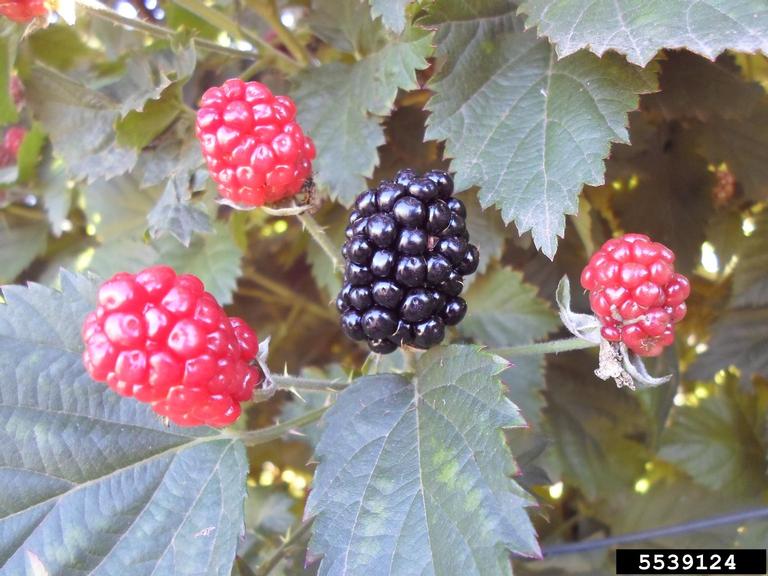Crop Production

Blackberries can be a great crop for the home garden or for a commercial farmer. Many different types of blackberry plants are available, and it is important to spend time studying the different cultivars before deciding which blackberry to plant. Before highlighting different cultivars, it is important to think about the planting location.
Planting Location
In addition to being planted in the full sun and having good internal drainage, think about the plant location with regards to winter injury. It is very common for blackberries to start blooming before the danger of frost is over. Plantings on slopes or top of slopes will allow cold air to drain away from the plants on cold nights. Blackberries planted on a southern slope may bloom earlier than those planted on a northern slope. Usually, it is beneficial for the plants to bloom as late as possible, but some years the northern slope will hurt and sometimes it will help. The main thing is to avoid low-lying areas if possible. Cold air settles in low areas, and those are the plantings that will be affected most by cold injury during bloom. Trees growing around the field can hold in the cold temperatures. A grower might be able to do something about some of these issues, but freezing temperatures during blooming is always a concern.
Blackberry Cultivars
The blackberry cultivars can be erect, semi-erect, or trailing. The trailing and semi-erect plants would require a trellis, and the erect plants may or may not need a trellis. A common management practice is plant trailing, semi-erect, and erect plants on a trellis. The next step is to decide between thorny or thornless plants. This seems like an easy decision, as most would choose the thornless plants. However, the thorny plants offer an aggressive growth habit, more disease resistance, and therefore can be very productive. Cultivars are available with large fruit on both thorny and thornless plants, and early or later ripening cultivars are available as well.
Popular thorny, erect cultivars include the following:
- Chickasaw
- Choctaw
- Kiowa
- Shawnee
Popular thornless, erect cultivars include the following:
- Apache
- Arapaho
- Navaho
- Osage
- Ouachita
Popular thornless, semi-erect cultivars include the following:
- Chester
- Natchez
- Sweetie Pie
- Triple Crown
There can be a big difference in the fruit size and production of some of these cultivars. It may depend on the use of the berry as to what cultivar to choose. There are some relatively new types of blackberries available called primocane fruiting blackberries. The primocane fruiting blackberries will produce a crop on the floricanes, but will also produce on the first year primocanes. The summer heat will reduce the fruit quality, and these should only be planted on a small scale.
Primocane fruiting blackberries that could be planted on a trial basis include:
- Prime-Ark 45
- Prime-Ark Freedom (thornless)
- Prime-Ark traveler (thornless)
More Information
To learn more about blackberry cultivation, read the Alabama Extension publication “Commercial Production Guide: Blackberry & Raspberry”. Give your local Extension office a call for assistance with other blackberry production questions.

